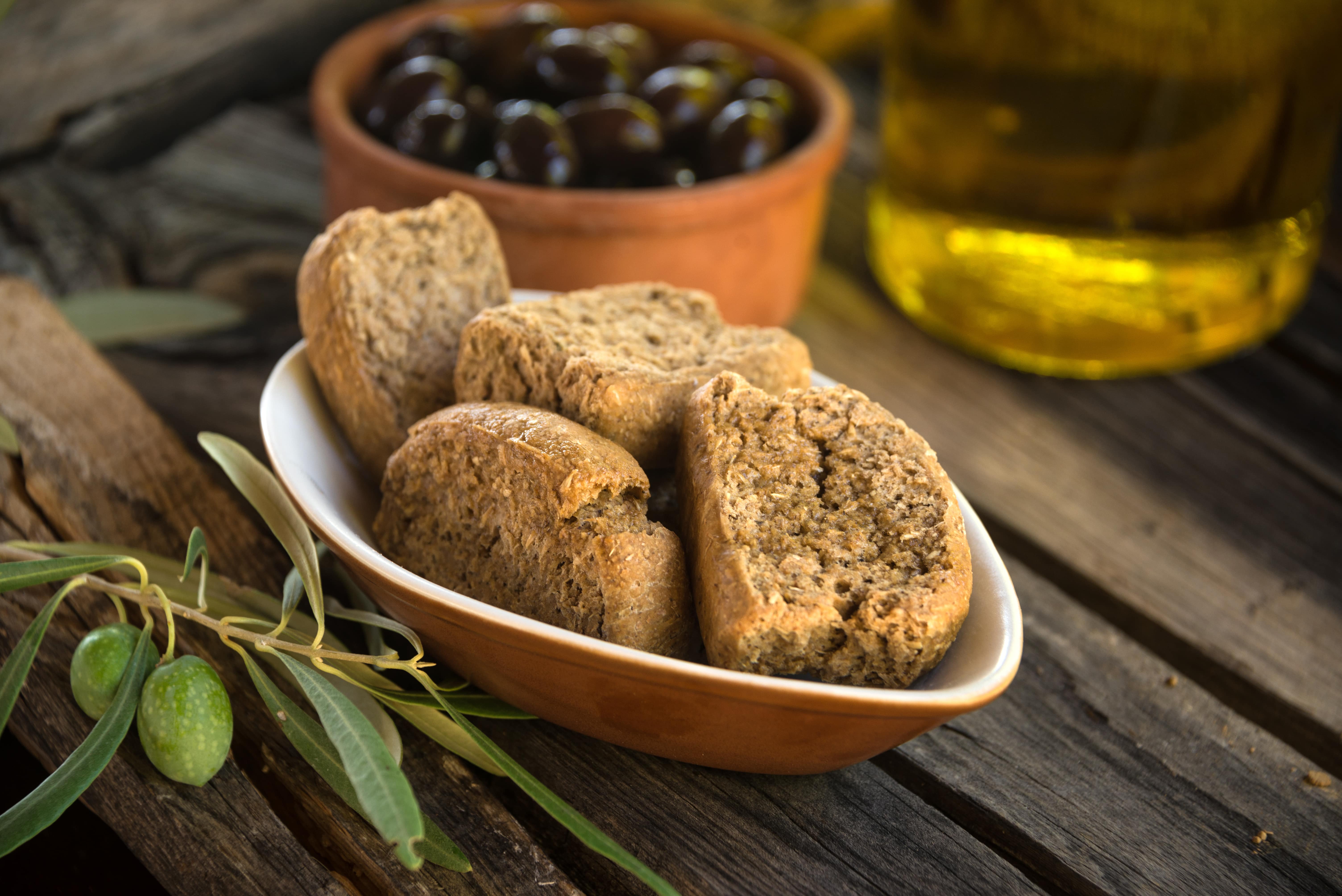The traditional rusks: heritage from the Minoans
Rusks are ideal for breakfast, consumed with cheese, butter and honey, sausages or tomato and feta cheese. Traditional rusks are made from various cereal flours: corn, barley, wheat, rye or even carrot flour. They are made from bread baked twice to eliminate all its liquids in order to be preserved longer. This is because at the past, families were not financially able to have fresh bread daily. Rusks were in other words the bread of the poor, those who spent their day in the field or in the farms.
Rusks are also found in ancient times. Their name was “Dipyrite Bread” because they were twice burned in the oven. It is no coincidence that they have been identified with the Cretan diet, having accompanied the Minoans on their sea voyages. It seems that several varieties of rusks originate from Crete and have slowly spread throughout the country and adapted to the conditions of agricultural production and the preferences of the inhabitants of those areas. Nowadays one can find rusks made of barley or wheat, sweet rusks and rusk bites. Moreover, we can find salty rusks or flavored with anise, mastic, with orange zest or other citrus fruits or alcohol, usually wine.
One of the most popular rusk is ntakos (also called “koukouvayia”, which means owl), based on the PDO Cretan barley rusk. After the rusk has been soaked and moistened, a generous amount of grated tomato is spread on the rusk and top with cheese. Pepper is sprinkled and a good amount of oregano, drizzled with olive oil. Some add olives or capers. Dakos is considered one of the easiest and nutritious snacks of Greek diet. Rusks, with their pleasant and neutral taste give excellent tea and coffee company.
